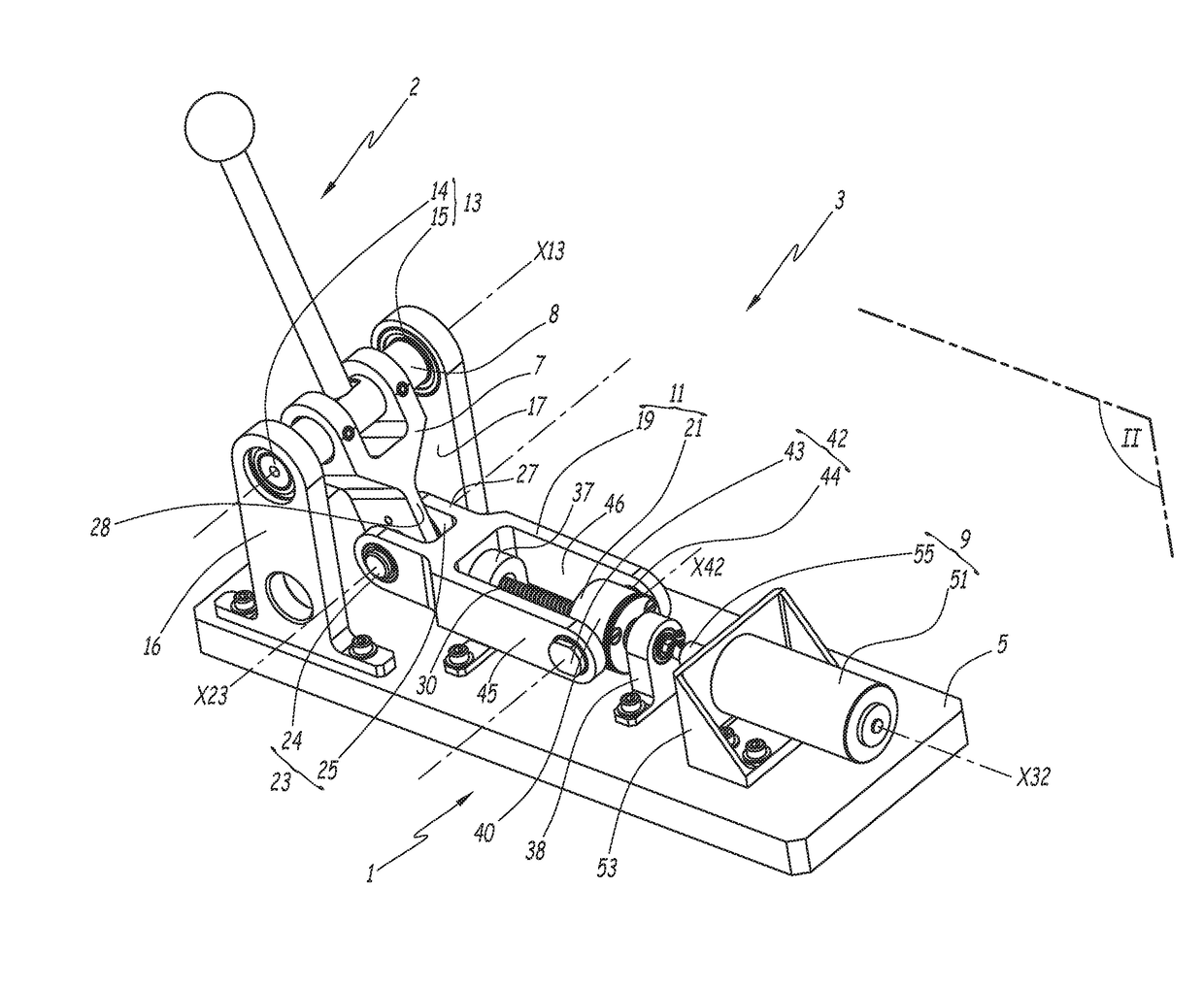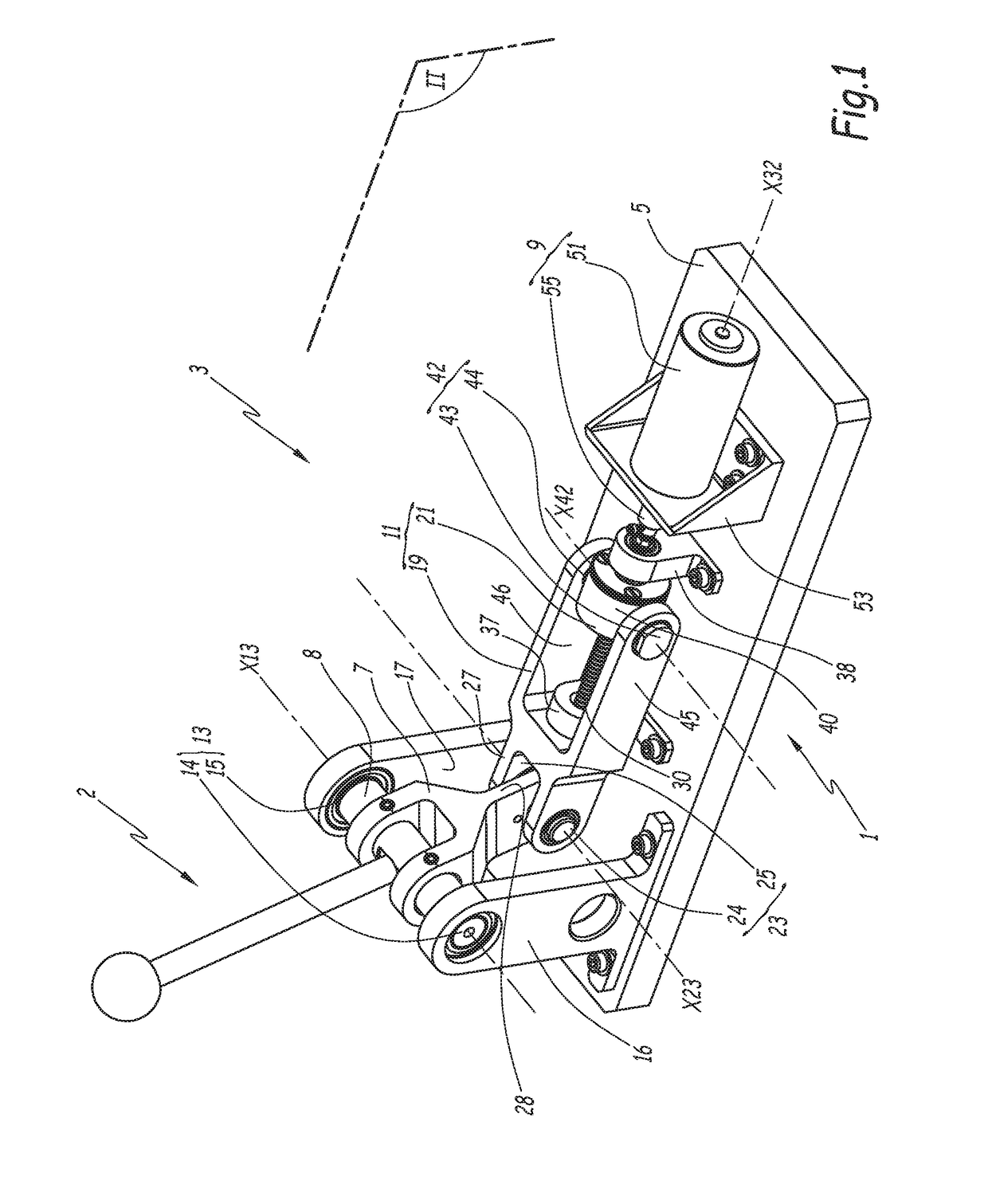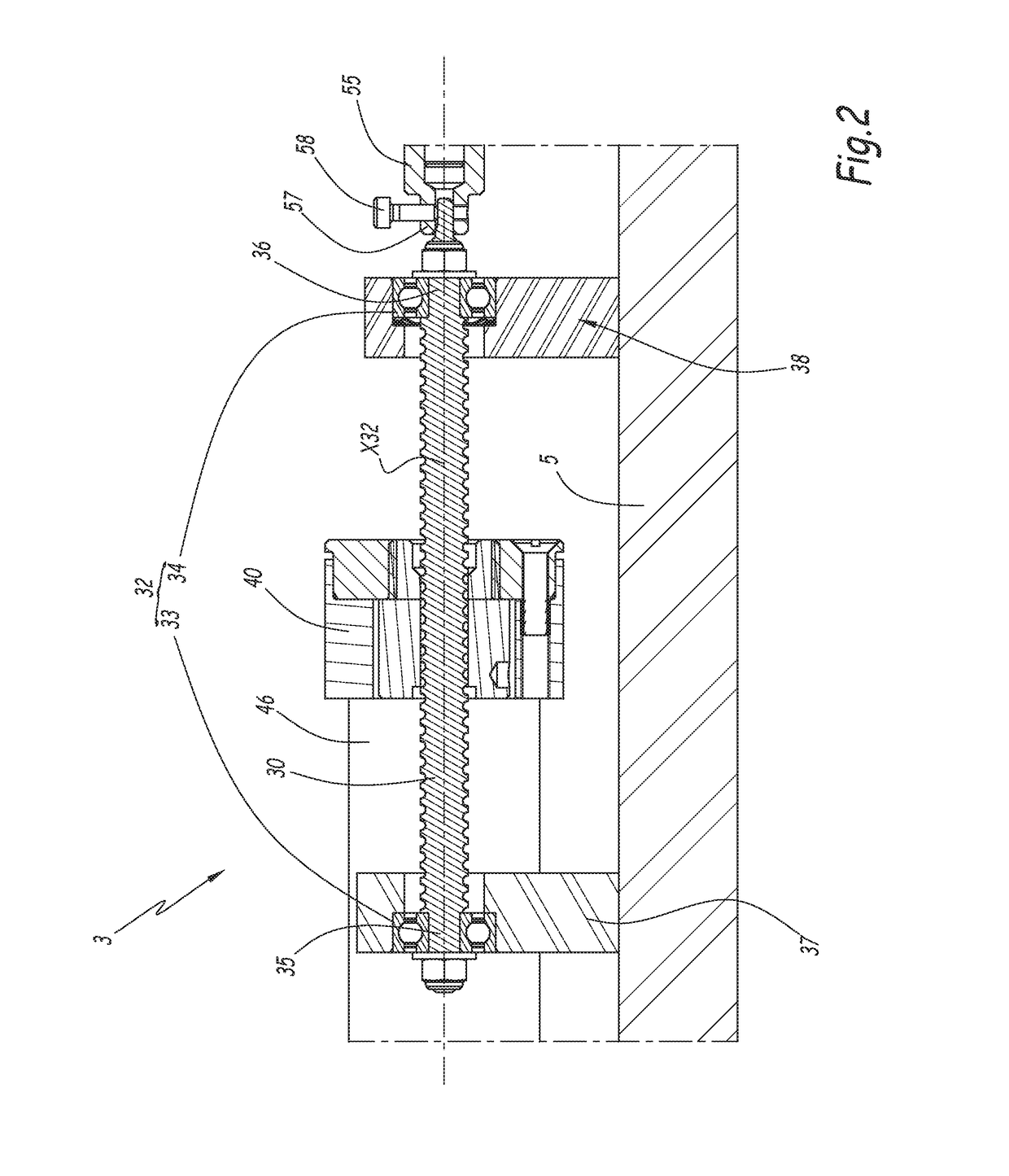Force Sending Device and A Flight Control Device Comprising Such A Force Sensing Device
a technology of force sensing and sending device, which is applied in the direction of force/torque/work measurement apparatus, gearing, instruments, etc., can solve the problems of not being able to meet all of the aforementioned requirements and singular demands of the range relative to the flight control device, and achieves reasonable cost, high mechanical efficiency, and the effect of low play and friction
- Summary
- Abstract
- Description
- Claims
- Application Information
AI Technical Summary
Benefits of technology
Problems solved by technology
Method used
Image
Examples
first embodiment
[0051]FIG. 1 shows a flight control device 3. This flight control device 3 is configured to equip an aircraft, which is not illustrated. For example, the aircraft is an airplane or a helicopter. The flight control device 3 is in particular designed to be integrated into a cockpit of this aircraft, as part of a man-machine interface for piloting the aircraft.
[0052]The flight control device 3 comprises a force sensing device 1 and a control member 2. In the case at hand, the member 2 forms a control lever able to be actuated by hand, preferably by a pilot of the aircraft, or by a crew member of the aircraft. Preferably, the flight control device 3 forms the reducing chain of an aircraft mini stick. Alternatively, the control member 2 can be actuated by foot, for example forming a control pedal. The flight control device 3 acts on one or several control surfaces of the aircraft, such as foil flaps or ailerons, or on the orientation of a propeller.
[0053]The force sensing device 1 compri...
third embodiment
[0112]In this third embodiment, the stator 251 is attached to the support of the device 201 while rotating freely, around a stator axis X251, relative to said support. To that end, a pivot link, not illustrated, is preferably provided, connecting the stator 251 to the support. The pivot link for example comprises one or several bearings with rolling elements. The stator 251 is therefore not stationary relative to the support, and may on the contrary pivot freely around the axis X251. In this configuration, the stator 251 is nevertheless connected in rotation to the support around a secondary axis X232. The axis X251 is parallel to the axis X213.
[0113]Depending on the application, it is provided that the device 209 is active, passive, or semi-active, according to the previous definitions.
[0114]The device 201 comprises a mechanical reducing gear 211, which, with a reduction ratio, links the rotation of the action member 207 relative to the support around the axis X213, with the rotati...
fourth embodiment
[0131]In FIG. 6, the device 301, which is also similar in all points to the device 201 of the embodiment of FIG. 5, further comprises a rotary device 309, in addition to the rotary device 209 already provided for the embodiment of FIG. 5. The rotary device 309 comprises a stator 351 and a rotor 355, hidden by the stator 351 in FIG. 6. The rotor 355 is attached to the stator 351 while rotating freely relative to the stator 351 around the axis X232. The rotor 355 is also connected in rotation with the screw 230 around the axis X232, via the end 235; i.e., opposite the rotor 255 relative to the screw 230. The stator 351 is fastened to the branch 283 of the framework 280; i.e., opposite the stator 251 relative to the framework 280. The device 309 also comprises a means for applying a force sensing torque for the rotation of the rotor 355 relative to the stator 251 around the axis X232. Thus, the device 309 is complementary to the device 209, in that they both apply a force sensing torqu...
PUM
| Property | Measurement | Unit |
|---|---|---|
| temperature | aaaaa | aaaaa |
| electrical energy | aaaaa | aaaaa |
| torque | aaaaa | aaaaa |
Abstract
Description
Claims
Application Information
 Login to View More
Login to View More - R&D
- Intellectual Property
- Life Sciences
- Materials
- Tech Scout
- Unparalleled Data Quality
- Higher Quality Content
- 60% Fewer Hallucinations
Browse by: Latest US Patents, China's latest patents, Technical Efficacy Thesaurus, Application Domain, Technology Topic, Popular Technical Reports.
© 2025 PatSnap. All rights reserved.Legal|Privacy policy|Modern Slavery Act Transparency Statement|Sitemap|About US| Contact US: help@patsnap.com



